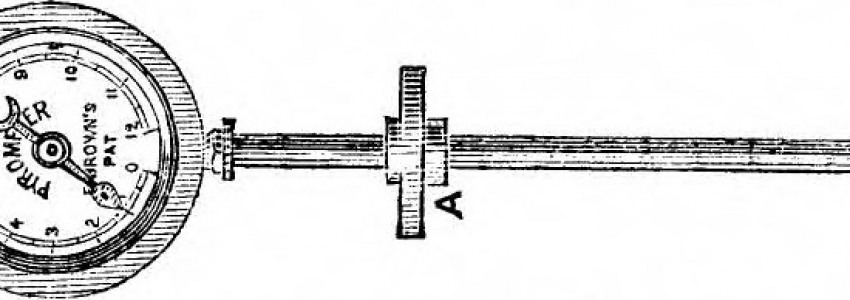
Kitmondo
06 Jan 2015
This article was originally published in Electrochemical and Metallurgical Industry Publication of February 1907. Information within this article is therefore correct as of 1907. The publication of this material aims to provide historical insight on the subject and its place in industry.
Cracking from quick temperature changes is caused in glass, porcelain and fire clay because those materials expand or contract as they are heated or cooled with the result that a difference of temperature between the surface and interior of any two parts of one piece produces internal stresses that the material is not strong enough to resist. It so happens that pure silica has an exceedingly small coefficient of expansion, and being free from internal strain, no matter what extremes of temperature are developed in one piece, it has naturally no tendency to crack from either heating or cooling.
Silica is now melted in the electric furnace and shaped into crucibles, muffles, dishes, tubes, plates and pipes, and such articles made of the pure silica do not crack, even with the most sudden and violent temperature changes.
It is almost startling to see articles of this material heated to a red or white heat and plunged into cold water without the development of even a crack. Similarly it may be taken cold and plunged into molten metal without damage to it.
According to the recent investigation of H. D. Minchin (Phys. Review, January, 1907) the coefficient of expansion of fused quartz is uniform from room temperature to the highest electric furnace temperature used in the experiments and mounts to 44.9 X 10-8. This means that fused quartz expands 1 part in 2,230,000 parts for 1°C, or 1 part in 4,010,000 parts for 1°F. For comparison we give some figures from Trautwine's pocketbook. A glass tube expands 1 part in 214,200 parts for 1°F. i. e. its expansion is almost 20 times larger than that of fused quartz. Black marble (which is about that substance in Trautwine's table which has the smallest coefficient of expansion) expands 1 part in 405,000 parts per degrees Fahrenheit, i. e. its expansion is still 10 times greater than that of fused quartz.
Why does a glass vessel crack when it is, for instance, suddenly heated from the outside? Because the temperature of the outside surface rises more quickly than the temperature of the inside surface, resulting in a difference of expansion of the glass outside and inside. This difference of expansion or this non-uniformity of expansion, which sets up stresses in the glass resulting in a crack, is reduced 20 times if fused quartz is substituted for glass. This figure is a good illustration of the enormous superiority of fused-quartz articles over glass articles for all purposes where sudden changes of temperature are unavoidable.
This fused silica softens slightly between 1400° and 1500°C. Its melting point is above 1500°C it is of good body, hard and strong. The inside surface of most shapes is glassy, and the other surface quite smooth.
Tubes may be had of numerous diameters from 1/16 inch to 1 inch inside measurements, and up to 5 feet long, and even larger tubes in shorter lengths. These tubes made with closed ends should bring back into use many a Le Chatelier pyrometer which has been laid away because of the great expense of continually buying porcelain tubes to protect the thermocouple wires. Those porcelain tubes that will stand the very high temperatures are necessarily somewhat high priced and they are prone to crack without warning and result frequently in a spoiled couple as well as a broken tube.
On the other hand, the tubes of fused silica give no such difficulty. Not the least interesting feature is that the fused silica tubes are less expensive than the porcelain.
It is the very reasonable price at which the articles of fused silica are being introduced into this country by the Wilson-Maeulen Co. New York, that insures wide interest in and usefulness for the material. Fused silica as they supply it is milky white and not transparent.
It may be of interest to many to know that they may now use their thermoelectric pyrometers to make temperature determinations on molten metals by using the fused-silica pyrometer tubes which may be inserted right into the metal, the tubes being so thin that very little time is lost in the heating of the thermocouple to the temperature of the melt.
But this new and comparatively cheap fused quartz will undoubtedly also find much favor for many other purposes, for instance, in form of crucibles, bed-plates for muffle furnaces, etc. for which purposes fused quartz has distinct advantages.
Image Credit: Internet Archive Book Images
















